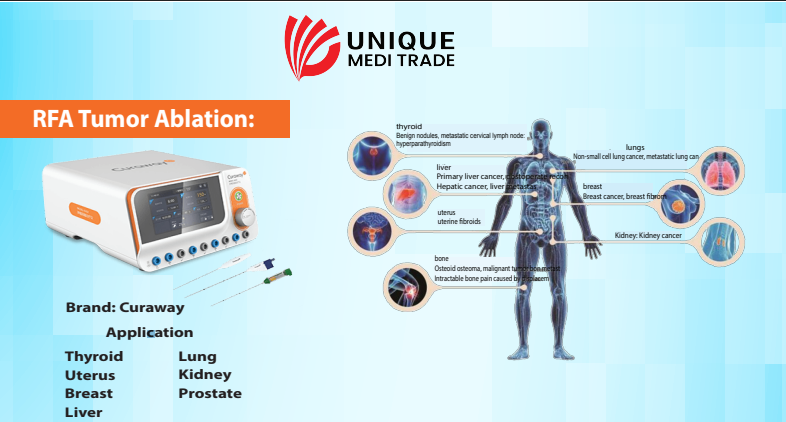RFA vs MWA in Gynecology
Choosing the Best Uterus-Preserving Technology for Uterine Fibroids
Introduction
With the rise of minimally invasive, uterus-sparing treatments for uterine fibroids, both Radiofrequency Ablation (RFA) and Microwave Ablation (MWA) have emerged as advanced solutions. Both technologies use heat energy to destroy fibroid tissues while preserving the uterus. However, while both are safe and effective, RFA is currently considered superior in gynecological practice for multiple reasons.
This article will help doctors, patients, and decision-makers understand the key differences, advantages, and why RFA is preferred over MWA for uterine fibroid treatment.
Basic Mechanism: How They Work?
| Technology | How it Works |
|---|---|
| Radiofrequency Ablation (RFA) | Uses radiofrequency waves to generate ionic friction in tissues, creating heat (60-100°C) to ablate fibroid cells. |
| Microwave Ablation (MWA) | Uses microwave energy to excite water molecules directly, creating heat (80-150°C) to destroy fibroid tissue. |
Key Comparisons: RFA vs MWA for Gynecology
| Criteria | RFA (Radiofrequency Ablation) | MWA (Microwave Ablation) |
|---|---|---|
| Clinical Experience in Gynecology | Long established in gynecology, FDA & CE approved for uterine fibroids | Limited data, mostly used in liver, lung, kidney |
| Precision | Highly controllable, predictable ablation zone | Less precise, risk of overheating surrounding tissues |
| Heat Distribution | Uniform, controlled spread | Faster, but uneven heating, potential over-treatment |
| Tissue Charring Risk | Minimal | Higher due to rapid heating |
| Safety Profile in Uterus | Proven safety in delicate uterine tissue | Less data, higher theoretical risk of damage |
| Global Guidelines | Included in gynecology guidelines (ACOG, ESGE) | Not yet included specifically for fibroids |
| Equipment Availability | Widely available for gynecological use | Primarily oncology-focused systems |
| Patient Tolerance | Excellent, minimal pain and fast recovery | Limited experience in gynecology, discomfort reported in some cases |
| Cost Efficiency | Cost-effective for fibroids | Higher device cost and maintenance |
| Future Fertility | Preserved in most cases | Safety for fertility not well established |
Why RFA is Considered Better Than MWA for Uterine Fibroids?
✔ Precision & Control
RFA offers superior control over the ablation zone, reducing the risk of unintended damage to surrounding healthy uterine tissues, especially critical when fertility preservation is important.
✔ Proven Safety & Long-Term Data
RFA has decades of clinical use in gynecology with thousands of global cases, safety studies, and long-term follow-ups. MWA is still emerging and lacks such gynecological-specific evidence.
✔ Less Risk of Overheating
MWA can overheat tissues rapidly, increasing the risk of charring or unintended injury, which is not desirable in the soft, elastic uterine tissue.
✔ Global Acceptance & Guidelines
RFA is included in several global gynecology and fibroid treatment guidelines, while MWA is still under study for this indication.
✔ Patient Comfort & Recovery
Due to its gentler, predictable heat pattern, patients experience minimal pain and quicker recovery with RFA compared to MWA.
Conclusion: RFA is the Preferred Choice in Gynecology
While both RFA and MWA are advanced heat-based ablation technologies, RFA remains the gold standard for gynecological applications like uterine fibroids due to:
- Proven safety
- Precision
- Long clinical experience
- Uterus-preserving outcomes
- Patient satisfaction
MWA is more suitable for solid tumors in organs like liver, lung, and kidney where faster, deeper ablation is needed, but RFA is more appropriate for the delicate tissues of the uterus where safety, control, and fertility preservation are key priorities.
Contact Unique Medi Trade
For the latest RFA systems, wireless ultrasound, and complete minimally invasive gynecological solutions:
📞 +8801717811312
📧 uniquemeditrade@gmail.com
🌐 https://uniquemeditrade.com/

